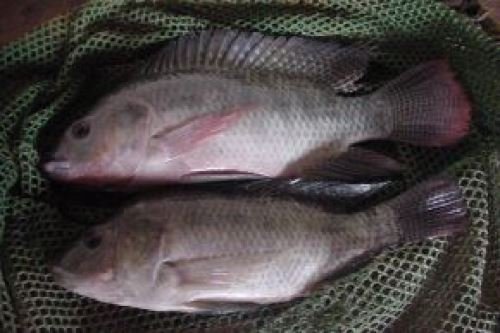
Tilapia, a popular and versatile fish, often faces a challenge: maintaining its flavor after freezing. But new research reveals a champion in this struggle: Cold Air Thawing (CAT).
A study led by scientists from Jiangsu Ocean University and Shanghai Ocean University explored how different thawing methods (water, air, and cold air) and storage duration (up to 6 months) affect the flavor of frozen tilapia fillets.
Why flavor matters
The study by Cheng et al., (2023) revealed changes in the volatile compounds of tilapia fillets during cold storage, helping to explore further the mechanisms of characteristic odor formation and related metabolic pathways of tilapia fillets during cold storage, resulting in flavor changes in the fillets.
According to research, fish flavor depends on two key components:
- Free amino acids (FAA): These contribute various flavors, including sweetness and bitterness.
- Nucleotides: These enhance the savory “umami” taste. It’s important to note that umami taste is an indicator of the presence of valuable amino acids or oligopeptides (Wang et al., 2020).
CAT’s advantage
Compared to water and air thawing, CAT offers several benefits for frozen tilapia:
- Reduced bitterness: CAT minimizes the increase of bitter-tasting FAA over time.
- Preserved sweetness: CAT helps maintain higher levels of sweet FAA. Yin et al., (2023) revealed that temperature fluctuations affect the free amino acid content of tilapia fillets, favoring the formation of glycine, which gives it a sweet taste.
- Umami boost: CAT promotes an increase in IMP (Inosine Monophosphate), an important umami nucleotide, during storage.
The science of flavor
The study employed sophisticated analysis techniques:
- Principal Component Analysis (PCA): This revealed a strong correlation between flavor quality and specific FAA and nucleotides as storage time increased.
- Orthogonal Partial Least Squares Discriminant Analysis (OPLS-DA): This confirmed that high levels of these flavor-influencing compounds are related to better flavor in frozen tilapia.
The verdict
According to the study’s findings, cold air thawing emerges as the best option for preserving the flavor of frozen tilapia fillets. Additionally, freezing for up to 2 months may even enhance the desirable umami flavor. According to Wang et al., (2020), umami substances improve the overall taste of food, modulating sweetness, enhancing saltiness, and suppressing acidity and bitterness.
Stay Always Informed
Join our communities to instantly receive the most important news, reports, and analysis from the aquaculture industry.
Potential benefits
This research provides valuable insights for:
- Fish consumers: Understanding the impact of thawing methods on flavor can help them choose the most flavorful frozen tilapia.
- Food processors and retailers: Optimizing storage and thawing practices can ensure that delicious frozen tilapia reaches consumers.
- Food scientists: The study expands our knowledge of flavor chemistry in seafood products.
Conclusion
“Overall, CAT is beneficial for maintaining the flavor of tilapia fillets during frozen storage, and freezing periods for 2 months enhance the umami flavor,” concluded the scientists.
By adopting cold air thawing, we can unlock the full flavor potential of frozen tilapia, making this versatile fish an even more enjoyable and convenient choice!
Contact
Xichang Wang
College of Food Science and Technology, Shanghai Ocean University
Shanghai, 201306, China.
Email: xcwang@shou.edu.cn
Reference
Wang, H., Wang, Y., Xu, K., Pan, S., Shi, W., & Wang, X. Changes in water-soluble taste compounds of tilapia (Oreochromis niloticus) fillets subjected to different thawing methods during long-term frozen storage. Journal of the Science of Food and Agriculture. https://doi.org/10.1002/jsfa.13542
Other references
Cheng, H., Mei, J., & Xie, J. (2023). Analysis of key volatile compounds and quality properties of tilapia (Oreochromis mossambicus) fillets during cold storage: Based on thermal desorption coupled with gas chromatography-mass spectrometry (TD-GC-MS). LWT, 184, 115051. https://doi.org/10.1016/j.lwt.2023.115051
Wang, W., Zhou, X., & Liu, Y. (2020). Characterization and evaluation of umami taste: A review. TrAC Trends in Analytical Chemistry, 127, 115876. https://doi.org/10.1016/j.trac.2020.115876
Yin, M., Xi, Y., Shi, Y., Qiu, Z., Matsuoka, R., Wang, H., Xu, C., Tao, N., Zhang, L., & Wang, X. (2023). Effects of temperature fluctuations on non-volatile taste compounds in tilapia fillets (Oreochromis niloticus). Food Chemistry, 408, 135227. https://doi.org/10.1016/j.foodchem.2022.135227
Editor at the digital magazine AquaHoy. He holds a degree in Aquaculture Biology from the National University of Santa (UNS) and a Master’s degree in Science and Innovation Management from the Polytechnic University of Valencia, with postgraduate diplomas in Business Innovation and Innovation Management. He possesses extensive experience in the aquaculture and fisheries sector, having led the Fisheries Innovation Unit of the National Program for Innovation in Fisheries and Aquaculture (PNIPA). He has served as a senior consultant in technology watch, an innovation project formulator and advisor, and a lecturer at UNS. He is a member of the Peruvian College of Biologists and was recognized by the World Aquaculture Society (WAS) in 2016 for his contribution to aquaculture.




